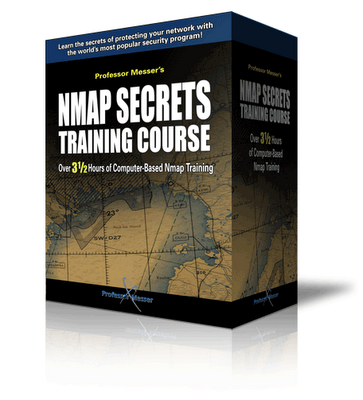בטרם החג ביצעתי בדיקה מקיפה עבור מדניות ה-Actvie Directory עבור אחד מלקוחתי אשר כללה:
•בדיקת מדניות סיסמאות.
•בדיקת מנגנוני בקרה (Audit).
•בדיקת מדניות חשבונות(משתמשים לא פעילים,משתמשים בעלי סיסמה קבועה וכו').
•חברות לקבוצות Domain Admins ו-Local Administrators .
•בדיקת הרשאות Share ו-NTFS בשרתים.
להלן כלים מומלצים לבחינת המערכת:
Ecora Auditor Professional -כלי חזק מאוד לחלול דוחות מקצועים רבים בין היתר מותאם ל-SOX, PCI, GLBA,FISMA/FISCAM, HIPAA.
לכלי מודול מיוחד עבור Active Directory ,למצגת בנושא יש ללחוץ כאן.
לצפיה בדו"ח לדוגמה יש ללחוץ כאן.
WinScanX -כלי המאפשר לנו לקבל מידע אודות:
Audit Policy Information
Display Information
Domain Information
LDAP Information
Administrative Local & Global Group Information
Local & Global Group Information
Installed Programs
Interactively Logged On Users
Logged On Users
Patch Information
Registry Information
Scheduled Task Information
Server Information
Service Information
Share Information
Share Permissions
SNMP Community Information
Get User Information
Get User Information via RA Bypass
Get User Rights Information
Get WinVNC3 & WinVNC4 Passwords
Save Remote Registry Hives
Ping Remote Host Before Scanning
Guess SNMP Community Strings
Guess Windows Passwords
כלי נוסף לבקרת חשבונות ואכיפת מדניות:
AccountAudit is a tool that allows you to examine the user account database of a Domain Controller
AccountAudit is a tool that allows you to examine the user account database of a Domain Controller (in a Windows Domain).
AccountAudit" allows you to report on:
Accounts with no password
Accounts that do not require password changes
Accounts with high bad password attempts
Accounts Locked out
Accounts with Expired Passwords
Accounts Passwords not Changed for long periods
Users last logon time
Users last logon Domain Controller
Domain wide, accurate, bad password attempt count
The Account Audit Report generated by AccountAudit is in HTML format and includes Notes, Recommendations and Risk Ratings.
קישור להורדה:
http://www.softpedia.com/get/Network-Tools/Network-Monitoring/AccountAudit.shtml
Softerra LDAP Browser-נמאס לכם לעבוד עם הפקודה DSQuery ? האפליקציה הזאת בין היתר תבצע עבורכם את העבודה ואפילו הרבה מעבר לכך תוך יכולת חללול דוחות:
http://www.ldapbrowser.com/download.htm
המגבלה היחידה של רשיון ה-Freeware הוא יכולת כתיבה ל-LDAP(מה שקיים בגרסה המסחרית).
•בדיקת מדניות סיסמאות.
•בדיקת מנגנוני בקרה (Audit).
•בדיקת מדניות חשבונות(משתמשים לא פעילים,משתמשים בעלי סיסמה קבועה וכו').
•חברות לקבוצות Domain Admins ו-Local Administrators .
•בדיקת הרשאות Share ו-NTFS בשרתים.
להלן כלים מומלצים לבחינת המערכת:
Ecora Auditor Professional -כלי חזק מאוד לחלול דוחות מקצועים רבים בין היתר מותאם ל-SOX, PCI, GLBA,FISMA/FISCAM, HIPAA.
לכלי מודול מיוחד עבור Active Directory ,למצגת בנושא יש ללחוץ כאן.
לצפיה בדו"ח לדוגמה יש ללחוץ כאן.
WinScanX -כלי המאפשר לנו לקבל מידע אודות:
Audit Policy Information
Display Information
Domain Information
LDAP Information
Administrative Local & Global Group Information
Local & Global Group Information
Installed Programs
Interactively Logged On Users
Logged On Users
Patch Information
Registry Information
Scheduled Task Information
Server Information
Service Information
Share Information
Share Permissions
SNMP Community Information
Get User Information
Get User Information via RA Bypass
Get User Rights Information
Get WinVNC3 & WinVNC4 Passwords
Save Remote Registry Hives
Ping Remote Host Before Scanning
Guess SNMP Community Strings
Guess Windows Passwords
כלי נוסף לבקרת חשבונות ואכיפת מדניות:
AccountAudit is a tool that allows you to examine the user account database of a Domain Controller
AccountAudit is a tool that allows you to examine the user account database of a Domain Controller (in a Windows Domain).
AccountAudit" allows you to report on:
Accounts with no password
Accounts that do not require password changes
Accounts with high bad password attempts
Accounts Locked out
Accounts with Expired Passwords
Accounts Passwords not Changed for long periods
Users last logon time
Users last logon Domain Controller
Domain wide, accurate, bad password attempt count
The Account Audit Report generated by AccountAudit is in HTML format and includes Notes, Recommendations and Risk Ratings.
קישור להורדה:
http://www.softpedia.com/get/Network-Tools/Network-Monitoring/AccountAudit.shtml
Softerra LDAP Browser-נמאס לכם לעבוד עם הפקודה DSQuery ? האפליקציה הזאת בין היתר תבצע עבורכם את העבודה ואפילו הרבה מעבר לכך תוך יכולת חללול דוחות:
http://www.ldapbrowser.com/download.htm
המגבלה היחידה של רשיון ה-Freeware הוא יכולת כתיבה ל-LDAP(מה שקיים בגרסה המסחרית).

 Module 1 – Getting Started with Nmap
Module 1 – Getting Started with Nmap